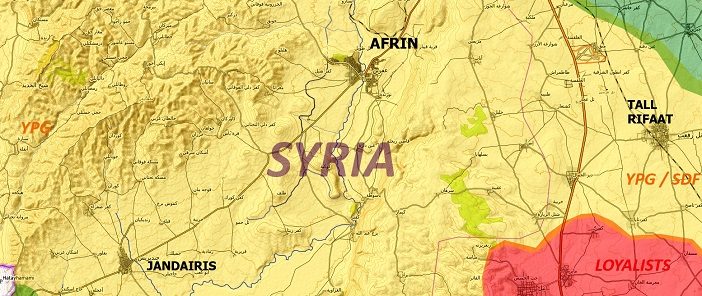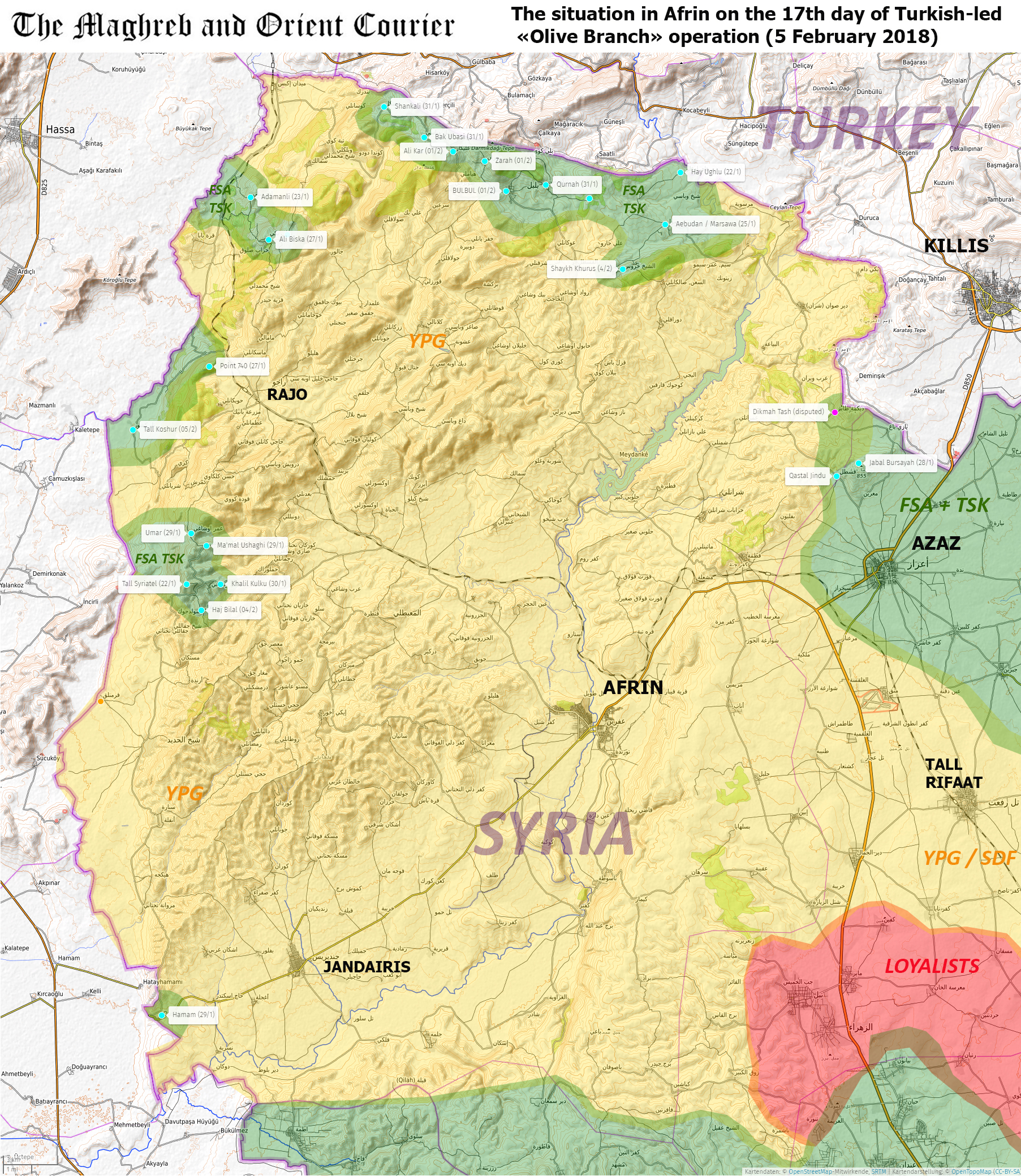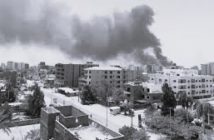On January 20, 2018, Turkey launched the “Olive Branch” operation, intended to secure Turkey’s borders and to remove the powerful YPG militia, which Turkey considers to be auxiliaries of the Kurdish independence movement, the PKK.
For this, Turkey relies, as in 2016 during the operation “Euphrates Shield” which had avoided the junction of the Kurdish forces of Afrin with those from the East, on a set of allied Syrian rebel forces, ranging from part of the pro-Turkish Free Syrian Army (FSA), to Islamist factions close to or issued from Ahrar as-Sham, and possibly to some units issued from the Islamist and jihadist coalition Hayat Tahrir as-Sham.
(Click on the map to enlarge)
During the first 8 days, despite powerful bombing, the Turkish hardly progressed, the Kurds being well entrenched and conducting effective counter-attacks. Fighting concentrated mainly on 3 fronts: the West in Rajo region, the North near the village of Bulbul, and the East near the rebel stronghold Azaz. From January 28, Turkish operations become more methodical, the troops advancing slowly on the various fronts. The Bursaya Mountains, lock to the North East were controlled on January 28; and Bulbul was taken on February 1st, as well as strategic heights to the west.
Despite a surprising resistance to Turkish firepower, YPG Kurds are isolated because the Russians do not want to anger President Erdogan which they need for the comprehensive settlement of the Syrian conflict, and the Americans, allies of the YPG and SDF versus Islamic State, announced that they were not concerned with the Afrin region, thus delivering it de facto to the Turkish forces.
In addition, the Kurds have so far refused to allow Syrian government forces from Bashar al-Assad to enter, which could nevertheless serve as a shield. The Syrian President, however, is not sorry to see this cumbersome separatist militia weakened by the fighting.
It is therefore likely that under the current conditions, the Turks will continue their progress towards the city of Afrin, unless they are satisfied with a safety zone of about twenty kilometers, which would still have the advantage to link the pro-Turkish Azaz rebel areas with those of Idlib.
* * *
It is hard to see how the SDF and YPG can continue to ignore the diplomatic protection that could be provided by the Syrian government and its Russian ally, the United States being unable to intervene against Turkey, their ally in NATO.







2 Comments
Pingback: Is The Turkish Attack On Afrin Intended To Split The U.S.-Kurdish Alliance? - Activenews.co.uk
Pingback: Syria – Is The Turkish Attack On Afrin Intended To Split The U.S.-Kurdish Alliance? – Emma Olive